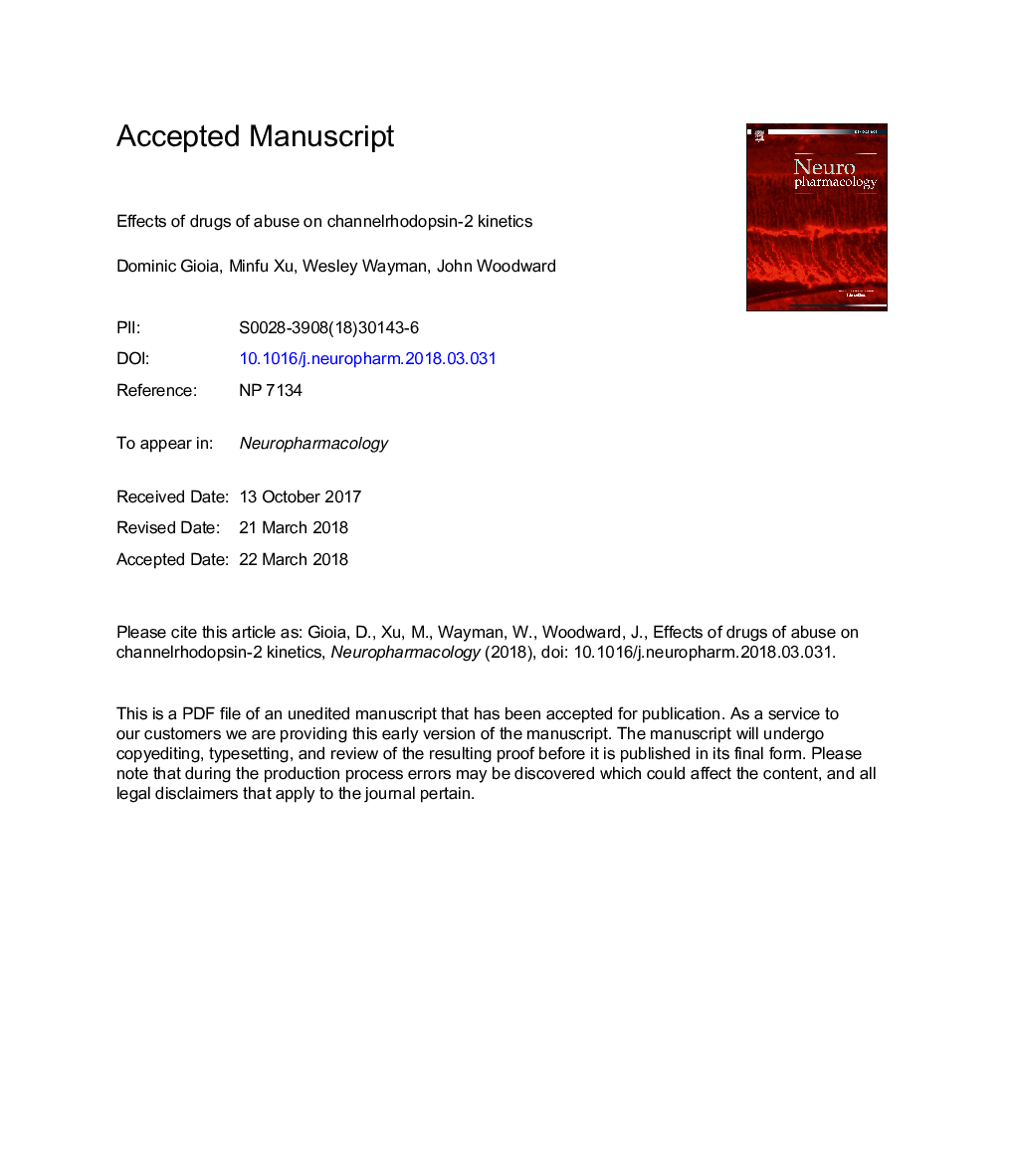| کد مقاله | کد نشریه | سال انتشار | مقاله انگلیسی | نسخه تمام متن |
|---|---|---|---|---|
| 8516727 | 1556581 | 2018 | 25 صفحه PDF | دانلود رایگان |
عنوان انگلیسی مقاله ISI
Effects of drugs of abuse on channelrhodopsin-2 function
ترجمه فارسی عنوان
اثر داروهای سوءمصرف در عملکرد کانالرودپسین -2
دانلود مقاله + سفارش ترجمه
دانلود مقاله ISI انگلیسی
رایگان برای ایرانیان
کلمات کلیدی
موضوعات مرتبط
علوم زیستی و بیوفناوری
علم عصب شناسی
علوم اعصاب رفتاری
چکیده انگلیسی
Channelrhodopsins are light activated ion channels used extensively over the past decade to probe the function of genetically defined neuronal populations and distinct neural circuits with high temporal and spatial precision. The widely used Channelrhodopsin-2 variant (ChR2) is an excitatory opsin that undergoes conformational changes in response to blue light, allowing non-selective passage of protons and cations across the plasma membrane thus leading to depolarization. In the addiction neuroscience field, opsins such as ChR2 provide a means to disambiguate the overlapping circuitry involved in mediating the reinforcing and aversive effects of drugs of abuse as well as to determine the plasticity that can occur in these circuits during the development of dependence. Although ChR2 has been widely used in animal models of drug and alcohol self-administration, direct effects of drugs of abuse on ChR2 function may confound its use and lead to misinterpretation of data. As a variety of neuronal ion channels are primary targets of various drugs of abuse, it is critical to determine whether ChR2-mediated currents are modulated by these drugs. In this study, we performed whole-cell electrophysiological recordings in HEK293â¯cells expressing the commonly used ChR2(H134R) variant and examined the effects of various drugs of abuse and other commonly used agents on light-induced currents. We found no differences in ChR2-mediated currents in the presence of 30â¯Î¼M nicotine, 30â¯Î¼M cocaine, 100â¯Î¼M methamphetamine or 3â¯mM toluene. Similarly, ChR2 currents were insensitive to 30â¯mM ethanol but higher concentrations (100-300â¯mM) produced significant effects on the desensitization and amplitude of light-evoked currents. Tetrahydrocannabinol (1-10â¯Î¼M) and morphine (30-100â¯Î¼M) significantly inhibited ChR2 currents while the cannabinoid receptor antagonist AM-251 had no effect. The sodium channel blocker tetrodotoxin (5â¯Î¼M) and the generic channel blocker/contrast agent gadolinium chloride (10â¯mM) also reduced ChR2 currents while the divalent ion magnesium (10â¯mM) had no effect. Together, the results from this study highlight the importance of conducting appropriate control experiments when testing new compounds in combination with optogenetic approaches.
ناشر
Database: Elsevier - ScienceDirect (ساینس دایرکت)
Journal: Neuropharmacology - Volume 135, June 2018, Pages 316-327
Journal: Neuropharmacology - Volume 135, June 2018, Pages 316-327
نویسندگان
Dominic A. Gioia, Minfu Xu, Wesley N. Wayman, John J. Woodward,
